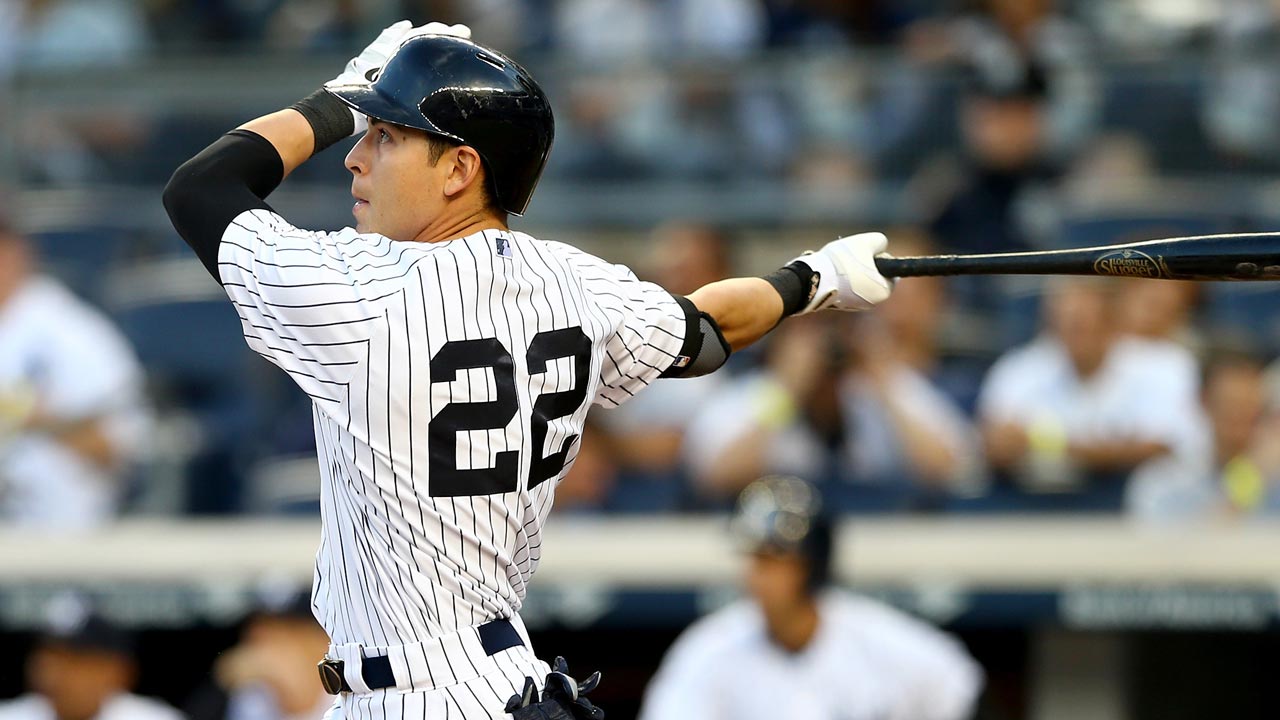At first glance, Carlos Gomez and Jacoby Ellsbury don’t appear to share many similarities aside from the position they play. Gomez hits for power, Ellsbury does not. Gomez throws and bats right-handed, Ellsbury does the opposite. Gomez is a free agent, Ellsbury is not. You get the picture by now. Despite these differences, what happens with Gomez in the coming weeks could provide some clarity regarding Ellsbury’s value to another team.
The best free agent centerfielder is Lorenzo Cain, meaning that Carlos Gomez could go to the runner up of the Cain sweepstakes. In turn, could that make Ellsbury the consolation prize for the team that can’t sign Cain nor Gomez? Perhaps. That’s not the only reason to pay attention to Gomez’s landing spot this winter, though. His payday could serve as an example of how much the Yankees could recuperate from an Ellsbury salary dump.
Although there are some significant distinctions between Gomez and Ellsbury, the two players are surprisingly similar statistically. Here’s what happened in 2017:
| Player | PA | BA | OBP | SLG | TAv | FRAA | WARP |
| Jacoby Ellsbury | 409 | 0.264 | 0.348 | 0.402 | 0.266 | -5.3 | 1.1 |
| Carlos Gomez | 426 | 0.255 | 0.340 | 0.462 | 0.270 | -1.2 | 1.6 |
With a .004 separation in TAv, the two offered virtually the same offensive output, albeit both took different routes to the same destination. Ellsbury made up for the power deficit with base running, as he stole 22 bases in 25 attempts whereas Gomez went 13 for 18. Defensively, Gomez has a leg up primarily due to Ellsbury’s weak arm strength. In sum, Gomez had a slight edge in WARP, but it was negligible gap.
| Player | wOBA | xwOBA |
| Jacoby Ellsbury | 0.309 | 0.302 |
| Carlos Gomez | 0.319 | 0.299 |
Statcast data from 2015 and onward makes an even better case for the two being similar hitters in terms of contact quality. The two are practically deadlocked in terms of expected results, though Gomez had better outcomes.
It’s safe to say that these two players were similar in terms of the value they offered their clubs in 2017, even though they got there in contrasting ways. Even the past three years of Statcast data indicates that the two aren’t all that different. Whether the two perform similarly going forward is another question, particularly because Ellsbury, 33 years of age, is two years older than Gomez. Though PECOTA is not yet available, Baseball Reference offers the Marcel projections that give us a very high level benchmark for the two in 2018. The system expects Ellsbury to deliver a .708 OPS while Gomez to offer a .738 mark. Again, not that much different.
If both were free agents, I’d guess that Gomez would get a slightly larger contract than Ellsbury, primarily due to age. Both players are far more similar performers than I think many realize, and both players can reasonably be expected to be similar hitters next season. With that in mind, would it be fair to expect another team to take on Ellsbury’s contract at a discount that brings it somewhat near whatever Gomez gets this offseason? I think so.
That leads us to figuring out what a team will pay Gomez this winter. A baseball insider told Jon Heyman that Gomez should expect to obtain a three-year, $35 million contract. Heyman expects something more modest: two years and $22 million. MLB Trade Rumors estimated the very same thing. Fangraphs’ crowdsourcing forecasts two years and $24 million. All four of these guesses peg Gomez’s annual salary between $11 million and $12 million. Meanwhile, Ellsbury is due approximately $68 million through 2020, which equates to just under $23 million per year on average.
If teams are willing to pay Gomez close to the terms of what Heyman’s insider predicts, perhaps the Yankees could recoup something like $25 million to $30 million of Ellsbury’s remaining deal. If teams are only willing to give Gomez a two-year contract, the Yankees might not even be able to recover $15 million of Ellsbury’s salary. My very rough estimates attempt to acknowledge that Gomez is younger and probably a tad better. The former scenario would be preferable, obviously, but even regaining $15 million of a sunken cost would be a satisfying outcome. The 2018 roster doesn’t have much use for Ellsbury, who’s basically been relegated to a bench role, so moving him makes sense. Moreover, based on my understanding of how the luxury tax payroll is calculated, the savings would be spread ratably across the life of Ellsbury’s remaining contracted seasons. That means $5 million off the payroll computation per season assuming a total recovery of $15 million. Though it doesn’t seem like much, it would help the Yankees remain below the $197 million tax threshold in 2018.
Of course, there’s a long way to go before the Yankees find a trade partner for Ellsbury. In all likelihood, Cain and Gomez need to find new homes first. Next, a team has to have interest in Ellsbury. That is, if any team has a desire to add him to its roster. Perhaps it winds up like a game of musical chairs, with one team having nowhere to go in order to fill its void in center. Should that come to fruition, both teams will need to haggle on the financials and the non-prospect goes to the Bronx in exchange. Perhaps, before getting to that stage, the Yankees can find out if Ellsbury is willing to waive his no trade clause (the two sides haven’t discussed that yet). There are plenty of hurdles for the Yankees to clear before moving on from Ellsbury, but at least it appears that a reasonable benchmark in Gomez will present itself this winter, abetting the facilitation of a trade.
Photo credit: Anthony Gruppuso / USA TODAY Sports
